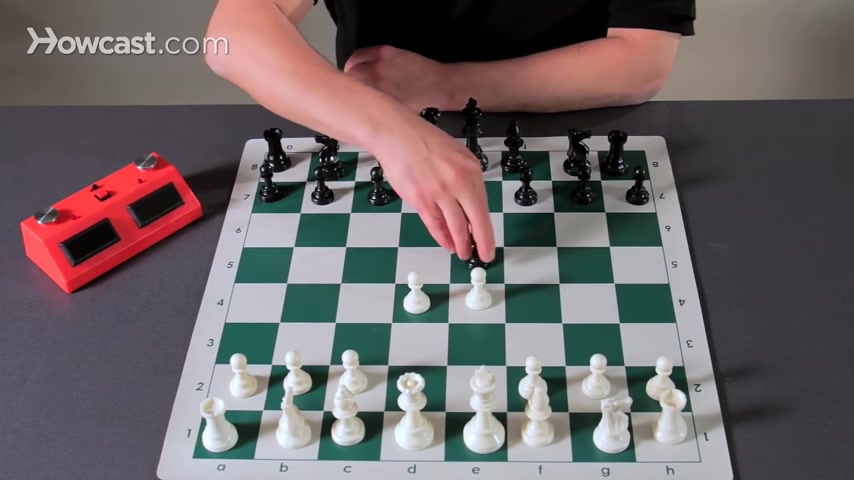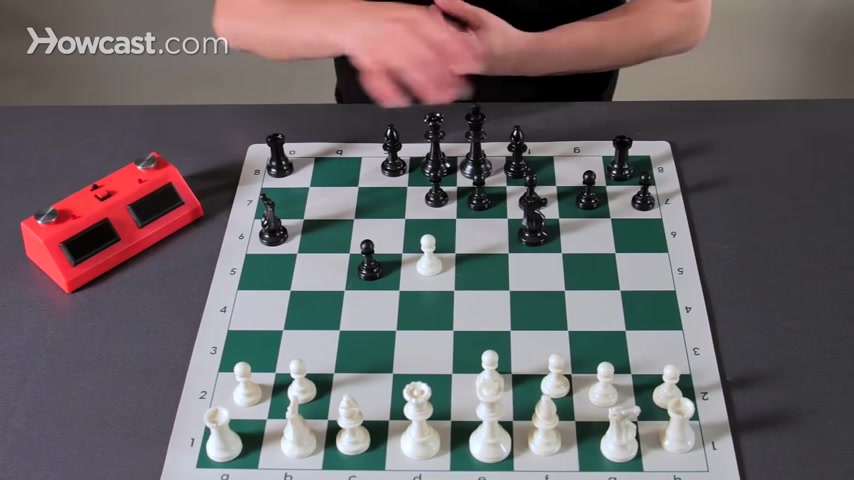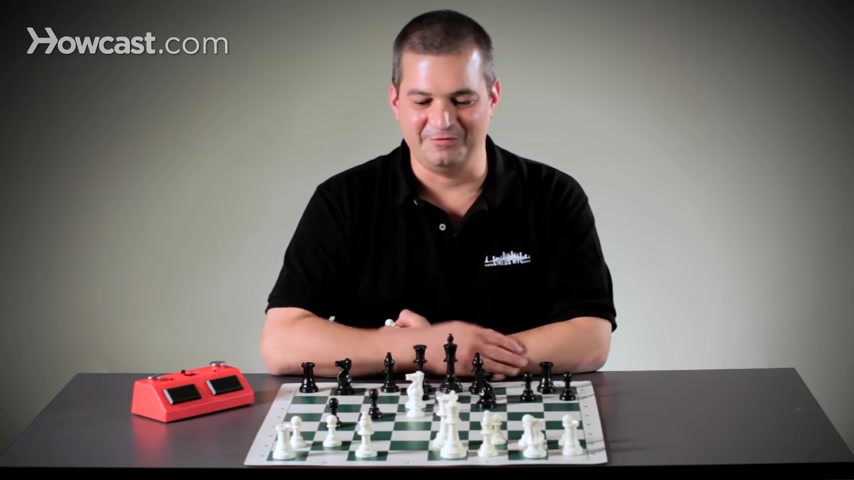https://www.youtube.com/watch?v=Duyobh1eYI8
What Is a Gambit _ Chess

Hi , this is David Sullivan for chess NYC .
And I'd like to talk about the center and gambits in chess , we generally try to bring our two pawns to the center of the board to free our pieces .
And also if black pieces come out , we can use that center to move forward and attack black .
But black will try to stop us from making our center .
If we play , let's say E four , black might play E five .
And then if we play our other center point out right away , point to G four , black can take the pawn , white can take back with the queen , but then black will develop a piece attacking the queen , making it waste time by moving again and then black will develop another piece .
And then all of a sudden , black has more big guys out than white .
Black has two pieces developed , white only has one piece .
Developed pawns are not considered pieces , they're just pawns .

So white wants to bring the two center pawns out , but black is fighting against it with his first move .
He's saying , well , you bring this pawn out .
I will take you right away .
White can use in this position .
What's known as a gambit .
Gambit comes from the Italian word gambit which means to trip up .
So white is trying to trip up .
Black , white plays his pawn to F four .
He offers black a pawn , black can take the white pawn and white won't be able to capture back .
What white is trying to do is deflect the pawn .
So that later he'll be able to more easily bring his other center pawn up and black won't be able to take it another example of a gambit .
And this is an opening that shows up in my own games .
Occasionally is when I would play white , I would often play D four , black plays nine F six .
I go C four and black plays C five .
I advance my pawn to D five and then black plays his pawn to B five .
This is known as the Bano gambit .

Black intends to offer me a pawn and then offer me another pawn .
So that later in the game , he'll have two open lines for his rooks that he can use to put pressure on me down here for your entertainment .
I will show you what I used to play against this when they play B five and then a six , I would actually play my knight to C three .
Developing a piece .
Black would take the pawn .
This pawn is unprotected but I don't grab it .
I play pawn to E four I free my bishop , black attacks my knight .
I bring my knight to B five and now it looks like my pawn on E four is hanging .
That is , it's unprotected .
But if black takes my pawn on E four , I can then attack his night .
And if his knight runs away , I have knight to D six checkmate smothered mate .
So here we have black offering a gambit , white declining the gambit .

Then white offers black a pawn .
And if he takes the pawn , he will get check mated .
These were two examples of gambits to give you a little idea of what we're talking about here .
As with any subject in chess , we could talk about this for months .
But just remember , gambits are basically , it's a small sacrifice in order to make some sort of game .
Are you looking for a way to reach a wider audience and get more views on your videos?
Our innovative video to text transcribing service can help you do just that.
We provide accurate transcriptions of your videos along with visual content that will help you attract new viewers and keep them engaged. Plus, our data analytics and ad campaign tools can help you monetize your content and maximize your revenue.
Let's partner up and take your video content to the next level!
Contact us today to learn more.